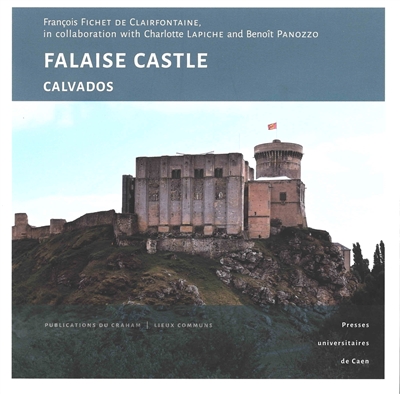en savoir plus

Carte fidélité
Permet à tous ses détenteurs d'obtenir 5% de réduction sur tous les livres lors du retrait en magasin (réduction non cumulable avec les réductions de type étudiant).
Offre également un certain nombre d'avantages auprès de nos partenaires.
Wishlist
Avec les favoris, retrouvez dans un espace les sélections effectuées au fur et à mesure de vos navigations dans le site.
Constituez pour votre usage personnel vos listes de livres en prévisions d'achats futurs et votre sélection d'articles, dossiers, événements, vidéos ou podcasts préférés ou à découvrir plus tard...
Il suffit simplement de cliquer sur "Ajout Favori" sur chaque page qui vous intéresse pour les retrouver ensuite dans votre espace personnel.
Requiert un compte Mollat
Mes Alertes
Requiert un compte Mollat
Falaise Castle, Calvados : a princely fortress at the heart of Norman history
Auteur : François Fichet de Clairfontaine
en savoir plus
Résumé
Présentation historique, archéologique et architecturale de ce château fort datant de la fin du Xe siècle, où serait né le futur roi d'Angleterre Guillaume le Conquérant. L'ouvrage retrace les événements qui s'y sont déroulés, les personnages qui y ont résidé ainsi que l'évolution de l'édifice à travers le temps, jusqu'aux guerres et aux restaurations successives qu'il a connues au XXe siècle. ©Electre 2025
Lire la Quatrième de couverture
Réduire la Quatrième de couverture
What remains of the fortress that is said to have witnessed the birth of William the Conqueror ? This castle accompanied the rise of Normandy since the early days of its foundation and was at the heart of the struggles against the king of France. Archaeological research revealed that every step of its evolution was preserved in its walls. It was already up and running since the late 10th century. It was protected by a rampart and probably was dominated by a master tower. The years 1120 and 1180 saw the construction of the Main Keep, then the Lower Keep. Eleanor of Aquitaine and Thomas Becket took up residence there. Featuring a lodge as well as a large church dedicated to Saint Nicolas, this princely fortress was heavily fortified. At the end of the 12th century, its first round towers and large gatehouses were built. It was seized however by the troops of Philip II of France in 1204. In French Normandy, Falaise was the object of special care as the Talbot Tower was built there. During the 14th and 15th centuries, the castle was at the heart of the Hundred Years' War and housed many different activities. After the French Wars of Religion and the siege by Henry IV in 1590, it was stripped of any military role. In 1804, an imperial collège was established in its enclosure. The castle was later damaged during the battles for the liberation of Falaise in 1944 but enjoyed a gradual rebirth through its restorations and events.
Fiche Technique
Paru le : 12/12/2019
Thématique : Châteaux et châteaux forts
Auteur(s) : Auteur : François Fichet de Clairfontaine
Éditeur(s) :
Presses universitaires de Caen
Collection(s) : Publications du CRAHAM
Contributeur(s) : Collaborateur : Charlotte Lapiche - Collaborateur : Benoît Panozzo - Traducteur : Mathias Dilys
Série(s) : Non précisé.
ISBN : 978-2-84133-936-5
EAN13 : 9782841339365
Reliure : Broché
Pages : 133
Hauteur: 18.0 cm / Largeur 18.0 cm
Épaisseur: 1.0 cm
Poids: 370 g
